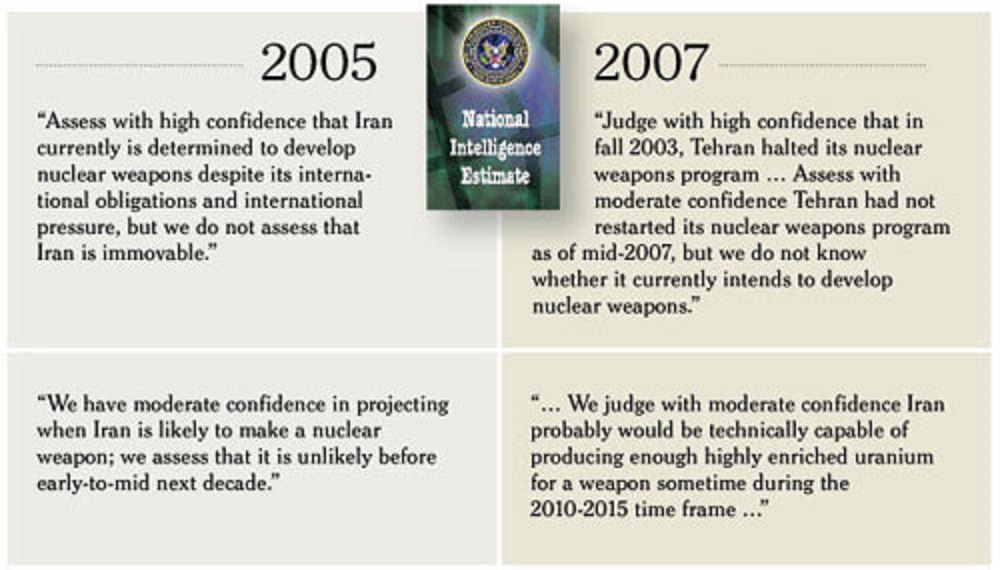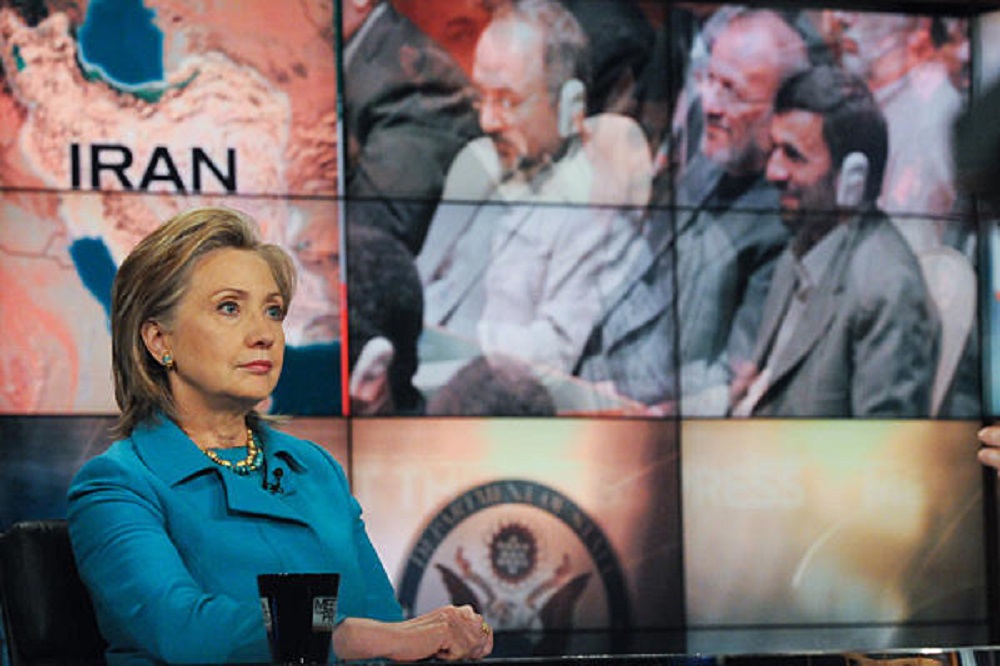Osirak II
Back in May 2001, even before the tragedies of 9/11, the State Department’s Patterns of Global Terrorism report had labeled Iran “the most active supporter of state terrorism in the world.” This followed on the heels of the President’s “Axis of Evil†speech where Iran had been condemned for its support of terrorist organizations like Hezbollah and Hamas and its efforts to develop weapons of mass destruction.
For the Bush Administration, the most immediate fear is the development and proliferation to terrorists of Iranian nuclear weapons. A rogue regime that shelters terrorists, funds their worldwide operations and expresses an intention to use nuclear weapons upon their acquisition is America’s greatest nightmare. Although Iran had signed the Non-Proliferation Treaty (NPT) in 1968 granting the International Atomic Energy Commission oversight of its nuclear program and the reprocessing and use of its nuclear materials, the former Shah continued to pursue a not-so-secret nuclear weapons program until his overthrow in 1979. After the Islamic revolution, Ayatollah Khomeini initially began dismantling Iran’s nuclear facilities until the Iraq-Iran War broke out. When the Iranian mullahs realized that sending Iranian children scurrying through Iraqi minefields carrying Taiwanese-made yellow plastic “keys to paradise†would not win the war, it decided to pursue its nuclear program with a vengeance, intent upon producing what it termed “the Islamic bomb.â€
–break–
During the 1990’s, Pakistan boosted the Iranian effort by providing expertise and designs for enrichment technology. North Korea later complemented these efforts. In 1991, Iran surreptitiously imported 1.8 tons of uranium hexafloride gas from China, and in 1995, Iran concluded an $800M agreement with Russia for the construction of a light water reactor at the Bushehr nuclear facility. It is therefore not surprising that the international community lends little or no credibility to Iranian denials that it has no need for or intention to develop nuclear technology given its large strategic oil and gas reserves. Were that the case, it appears that Iran is spending an extraordinary amount of time and money needlessly trying to enrich uranium whose sole purpose can only be for the production of nuclear weapons.
Eventually, the wall of secrecy began to break down when, in late 2002, an Iranian opposition group the National Council of Resistance of Iran disclosed evidence of several large nuclear facilities that had never been reported to the IAEA by Tehran. In 2003, US and Israeli satellites began beaming back images of a round reactor dome, cooling pipes, pumping equipment and what some intelligence analysts believe to be antiaircraft missile battery sites. Something sinister was going on.
There is little question that Iran is working to develop its own nuclear arsenal. It has expanded its construction of nuclear facilities to include Natanz and Arak. The Natanz facility is a hardened complex containing 160 completed centrifuges with kits to assemble another thousand. Ultimately, Natanz (which is 100 north of Isfahan) will have the capacity to house some 50,000 centrifuges capable of enriching enough uranium to produce several nuclear bombs per year. According to DEBKA intelligence reports, the Arak facility produces the heavy water necessary to produce plutonium and is located near Khondab in northern Azerbaijan. Intelligence sources have identified three other locations that are also part of the “non-existent†Iranian nuclear weapons program. One is the National Iranian Steel Company in Isfahan, which provides a number of nuclear-related metallurgic products, and another is the Uranium Hexaflouride (UF6) conversion site at the Rudan Nuclear Research Center near Shiraz. In late October 2003, an Iranian dissident group disclosed details of a third nuclear facility ten miles east of Isfahan. The site is registered as the Isfahan Fuel Research and Production Center, and is being used to convert uranium and to test centrifuges for uranium enrichment. In effect, Iran has learned from the destruction of the Iraqi Osirak reactor by Israel in 1981 and has concluded that its wisest course of action is to decentralize the construction of its nuclear program with a view to final assembly at a later date.
The concern is that Iran has refused to give the International Atomic Energy Agency (IAEA) the full access it needs to these sites and the information necessary to certify that the country is not building nuclear weapons (despite their denials). In effect, Iran is stalling for time. The CIA estimates that Iran is seven years from having a nuclear bomb. Israeli intelligence however, estimates that it is only a matter of months. Henry Sokolski of the Nonproliferation Policy Education Center writes in National Review Online that, if Iran fed its centrifuges with the enriched uranium that Russia plans to send it for the light-water Bushehr reactor, Tehran could produce enough material for a bomb “in a matter of weeks.” To many in and out of the administration, the construction sites at Bushehr (and the others throughout the country) remain an ominous development.
With construction due to be completed by early 2004, the window for action is beginning to close and the bodies responsible for monitoring the situation continue to dither. The American dilemma is somehow to destroy Iran’s ability to produce weapons of mass destruction and to export terror abroad without alienating the inherently pro-Western attitudes of the Persian masses. A decision is required either by the Israelis or by the Americans and the clock is ticking.
The Obliteration of Israel
Iran was placed on the President’s “Axis of Evil†for good reason. By conservative estimates, Iran funnels at least $150M a year into Middle East terrorists’ coffers, buys them weapons and computers, pays for their training camps and provides bounties to the families of their suicide bombers. But its nuclear program has everyone worried – especially Israel.
Despite Teheran’s insistence that its nuclear development is intended for peaceful means, there is growing evidence to support the belief that Israel will be targeted for an Iranian nuclear strike the moment Iranian nuclear capability is achieved. Even after the most devastating earthquake in Iranian history last year claimed an estimated 30,000 lives, the hatred of Israel by the Iranian mullahs was so deep, that it forbade Israel from providing rescue services and humanitarian relief to the victims. The mullahs would rather have their people die under the rubble than to have them saved by Jews.
Knowing this, there is no nation more concerned about nuclear proliferation in the Middle East than Israel and no nation more willing to take action to halt it (as it did when it bombed Iraq’s Osirak reactor in 1981). Israel believes that it has to stop this nuclear rogue nation before its too late and based upon its past actions in similar situations, it will. Appearing before a Knesset committee, Meir Dagan, head of the Mossad intelligence agency, warned on November 17, 2003 that Iran’s nuclear activities posed the gravest “threat to the existence of Israel” since the State’s creation in 1948. A week earlier, in a visit to Washington, Israeli Defense Minister Shaul Mofaz declared that Iran was reaching the “point of no return” in its nuclear ambitions. The world was soon to be faced by another North Korea.
The threat posed by Iran to Israel, to the region and to the world at large in this regard is not imaginary. It is the fundamental reason why the “right of pre-emptive action†was included in the Bush Doctrine – except that there is now a growing probability that Israel, not the United States, will exercise that option. In a prominent national sermon in December 2001, former Iranian president Hashemi Rafsanjani declared that the day “the world of Islam comes to possess [nuclear] weapons” will be “the day … global arrogance will come to a dead end.” He added that a bomb used against Israel “would leave nothing on the ground” and would rid the world of much “extraneous matter,” by which he appears to mean millions of Jews. Rafsanjani openly speculated, (at Tehran University) that Israel could be destroyed with nuclear weapons since the Islamic world could absorb any Israeli response – the implication being that absorbing a nuclear response from Israel was strategically acceptable as the price for Israel’s destruction!
From an Israeli perspective, a nuclear-armed Iran is a clear and present danger to its existence. Iranian leaders have made no effort to hide the fact that Israel is the primary target of their ballistic missile program. While the Iranian political spectrum is polarized between reformers and religious conservatives, there is a broad religious consensus among Iran’s ruling Shi’ite mullahs to continue anti-Israeli terrorism and to obstruct any peace process. Whereas few Iranians are opposed to the development of a nuclear energy facility, most do not see it as a solution to their primary concerns: economic malaise and political and social repression. What’s more, most of the Iranians surveyed said they oppose the pursuit of a nuclear weapons program because it runs counter to their desire for “peace and tranquility.” In fact, Iranian parliamentary reformers have stated on many occasions that such adventures are contrary to the interests of the country, but the reformers have been rendered powerless to stop it. Thus, on April 16, 2002 an editorial in the official hard-line Iranian daily Jomhuri Islami urged all-out war with Israel and condemned as treasonous the now defunct Saudi peace plan. The previous 18 months had witnessed a sharp escalation in anti-Israel rhetoric largely matched by increasing Iranian material support for Middle East terror groups. Supreme Leader Ali Khamenei continues to refer to Israel as a “cancerous tumor” that he intends to obliterate. Evidence suggests that he isn’t bluffing. Iran’s Shahib-3 missile, with an effective range of well over 1,300 kilometers (approx. 800 miles) is known to be capable of being launched towards Israel from deep inside Iranian territory. Tests indicates that Iran is quickly perfecting its own engine capability, setting the stage for developing its planned longer-range Shihab-4 and Shihab-5 missiles. With a 2,000-kilometer range, the Shihab-4 will present an Iranian missile threat to the Indian subcontinent, and at 5,500 kilometers, the Shihab-5 brings most of Western Europe within range of Tehran. When these missiles were noted in a military parade in Tehran last year with the words written upon them “Death to Israel,†there was no mistaking Iranian intentions.
The Iranian threat, therefore, has global implications. Any use of Iranian nuclear weapons against Israel could (and probably would) result in a regional conflagration. If just one nuclear warhead were to fall on Israel, the entire country would be obliterated and much of the Middle East would become a victim of nuclear fallout. As a result, any Iranian nuclear capability represents an unacceptable threat to Israel and to the world, and for that reason Israeli intelligence sources confirm that Israel is preparing contingency plans for multiple pre-emptive strikes against all Iranian nuclear installations – a most complicated (not to mention dangerous) operation. Israelis fear that the steady development of Iranian missile technology will hem her in with more firepower than Israel can feasibly counteract even with its sophisticated Arrow anti-missile defense system. Only one missile with a nuclear warhead need penetrate Israel’s nuclear shield and the country is annihilated.
The Jewish State will never allow the Iranian mullahs to achieve nuclear capability. If the Iranians are not prepared to dismantle their nuclear program (as Libya is prepared to do), Iranian air traffic controllers had best take a crash course in Hebrew before the snow melts.



